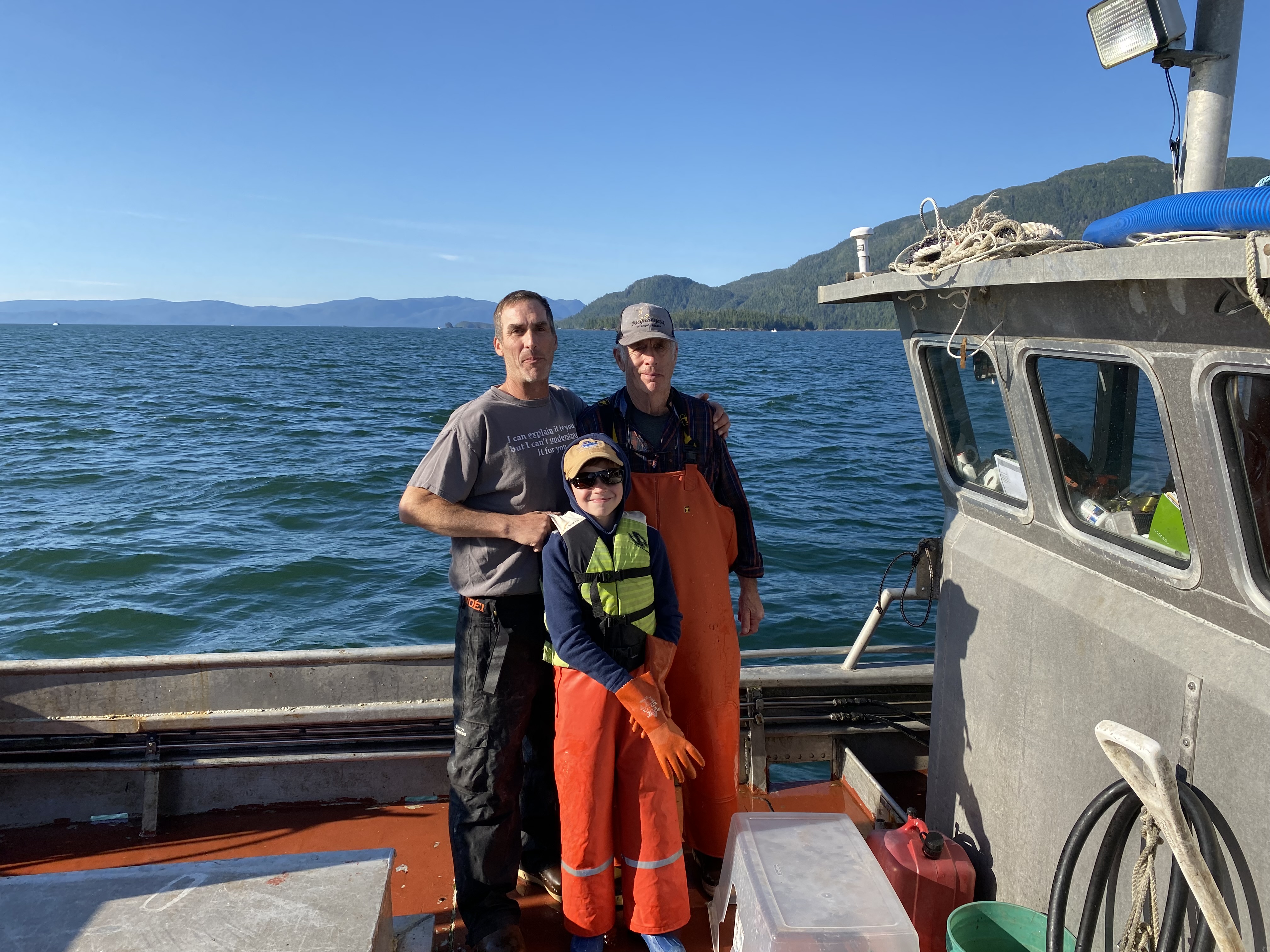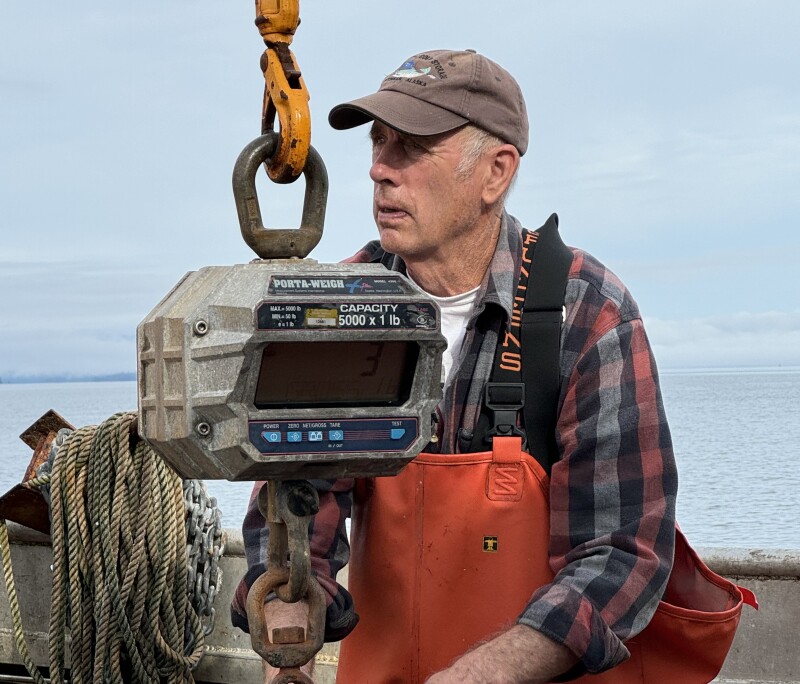Leonard Leach knew he’d found his calling when he landed a job as a greenhorn on an Alaskan seiner in 1962. The 82-year-old fisherman has been working the waters within the Gulf of Alaska ever since, in a career spanning more than six decades as a longliner, troller, gillnetter, seiner and crabber, and is known as a mentor and leading voice in the industry. Leach’s long involvement in the fishing community has earned him a place this year on the list of National Fisherman Highliners.
With the knowledge he’s gleaned from 62 years on the water, Leach has been a leading voice at countless meetings that have shaped the industry as we know it. But if you press him on his greatest accomplishments, the conversation quickly changes to his quest to pass on his knowledge and empower young entrants to the fisheries.
“I’ve got 50 years of halibut fishing experience,” says Leach. “If I can show them spots that took me years to learn, why take it to my grave? I really like helping, shortening the learning curve.”
Leach knows the waters within the Gulf, where there are enough halibut and black cod to sustain him and his crew for years and the hidden places where, on a certain day and tide, a fisherman can load up a seine with salmon. His charts and logbooks are brimming with fishing secrets that he is eager to pass on to the next generation.
“He mentors them and gives them just about anything they need to get started: gear, parts, a helping hand,” says his daughter Frances Leach, who grew up fishing with him. “One time, he even gave a guy a mast. It is really important to him to help out the younger generations and make sure they are set up for success.”

Leach came to Alaska just three years after it became a state in 1962, landing his first job on a seiner. That was the beginning of a fishing career in which he embraced crabbing with pots for Dungeness and tanners, gillnetting for herring in Southeast and seining herring in Togiak. He bought a salmon troll permit for Southeast and fished that for years, going west in pursuit of albacore.
On top of that, he tendered fish to canneries for 20 years. He’s longlined for black cod and halibut, the latter of which he says is his favorite fishery of all, and can boast of having the same halibut crew for 30 years. The list of boats he’s owned includes the Gruesome, Sydonie, Bothmia, Trish, Towego, and Clancy.
As many of our former Highliners will attest, catching fish is half of the equation; advocacy makes up the rest. Leach’s entry into fisheries policy stems from walking into a fisheries management meeting in which the attendees prescribed closing an area popular with salmon trollers in Southeast. Problem was, there were no trollers in the crowd.
“I went to this meeting when they were talking about closing a good area. I looked around, and there were no fishermen.”
That prompted Leach and others to form the Alaska Trollers Association (Formerly known as the Southeast Alaska Trollers Association from 1925 to the late 1970s) and piqued his interest in other opportunities to represent the industry. Besides serving as founding member and vice president of the ATA, the list of participation in other organizations goes on to include the Southern Southeast Regional Aquaculture Association, where he worked on getting the 3 percent assessment to fund the salmon hatchery programs.
He served as a board member, president, and vice president during his tenure with United Fishermen of Alaska, a member of the Ketchikan Fish and Game Advisory Committee, a board member of the Ketchikan Fisherman Association, a board member of the Halibut Producer’s Coop, which eventually morphed to the Seafood Producers Coop. Leach also served as a board member and vice president of the Southeast Alaska Gillnetters Association was selected as a delegate in the Pacific Salmon Treaty, and worked as vice chair of former governor Jay Hammond’s campaign in Ketchikan.
His most notable endeavor in fisheries policy, according to Leach, was his involvement in the passing of Alaska’s limited entry system for salmon. Controversial and highly contested among various interest groups in the 1970s, the fate of the limited entry program hung on the vote as an initiative on the statewide ballot. What fishermen had going for them at the time was their unity, an ingredient that Leach and other supporters capitalized upon during their campaign.
“We knew that if we could ever stick together, we could carry just about any statewide vote,” says Leach. “That was really big, to get it on the ballot. But we didn’t really know if we could pull it off.”
During the 1990s, Leach became a voice in the arduous process of the Individual Fishing Quota (IFQ) Program for halibut and black cod. “It gave us ownership of the industry and the future of it,” he says.
Besides lending a hand to newcomers joining the fleet, Leach’s two daughters, Trish and Frances, and son, Perry, rank among the immediate beneficiaries of his fishery legacy. They’ve all worked the decks for halibut and other species through the years, and more recently, Leach’s crew includes his granddaughter. “This past summer, I sent my daughter out with him,” says Frances Leach.
Get to know Leach long enough and you’ll learn of beach logging, yet another of his passions involving boats. “If I had to choose, I think beach logging was the most favorite thing I’ve ever done,” says Leach.
For years, it was highly profitable to salvage the huge logs that broke loose from rafts that tugboats towed to sawmills in Ketchikan. Leach would prowl the shoreline with his boat until he found a good log, rig it with lines, jerk it loose from the rocks, tow it to the sawmill and sell it. He says he got in on the venture in the years before the export market developed in the late 70s and 80s, when the logs were loaded on freighters headed for Japan. Though the huge loose logs often drifted around for days or weeks they’d eventually fetch up in the crannies of the Southeastern Alaska shoreline. Leach remembers the excitement of discovering the huge logs, free for the taking.
“You’d go around a point and never knew what you were going to find,” he says.







